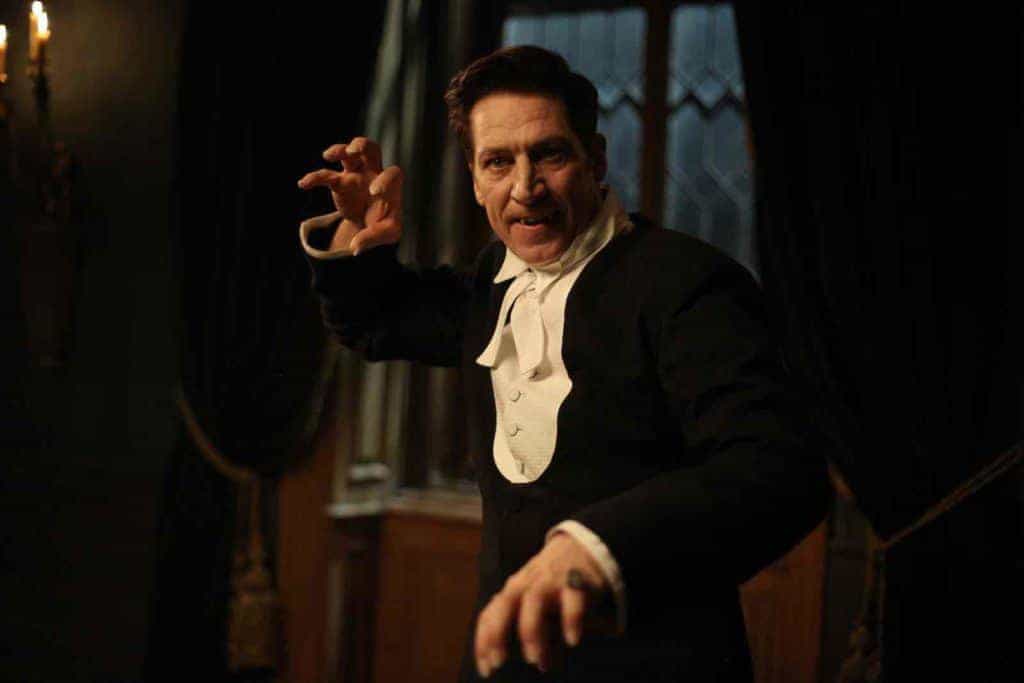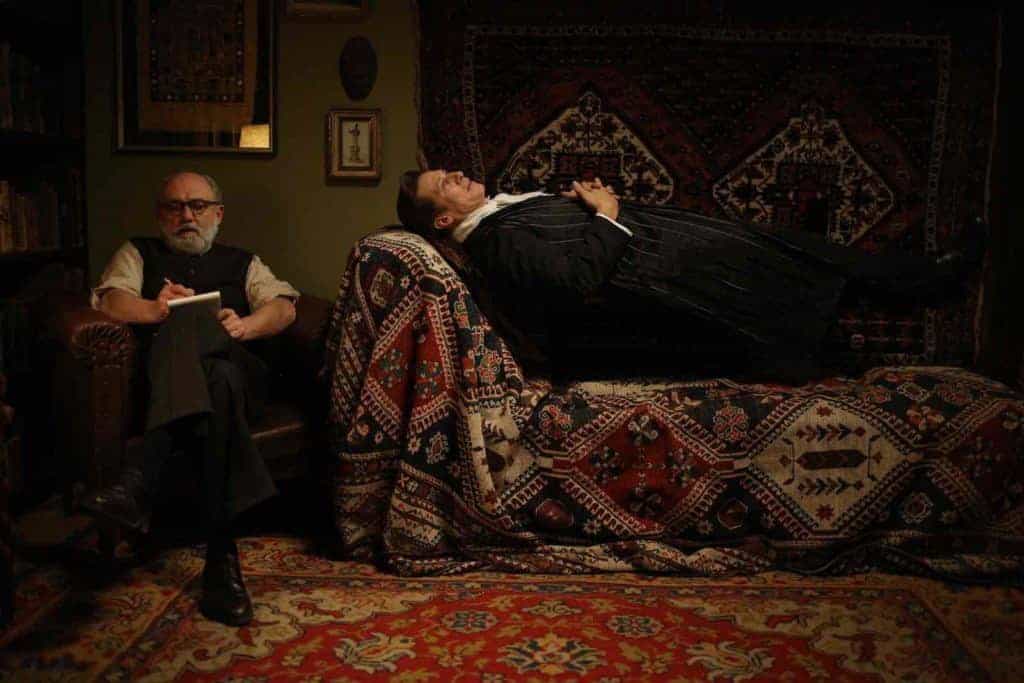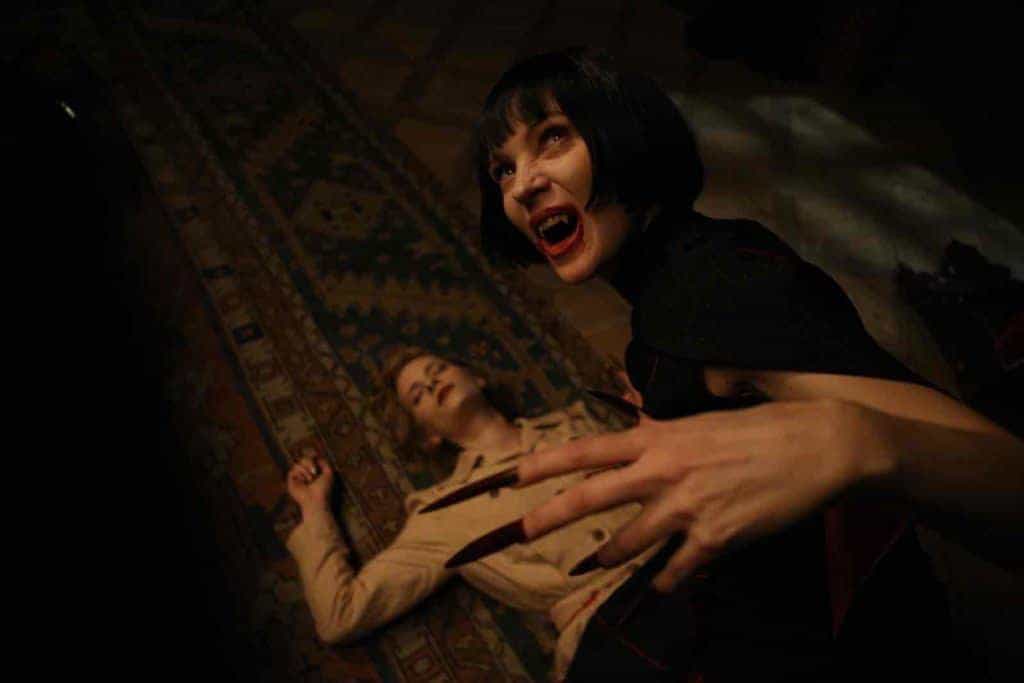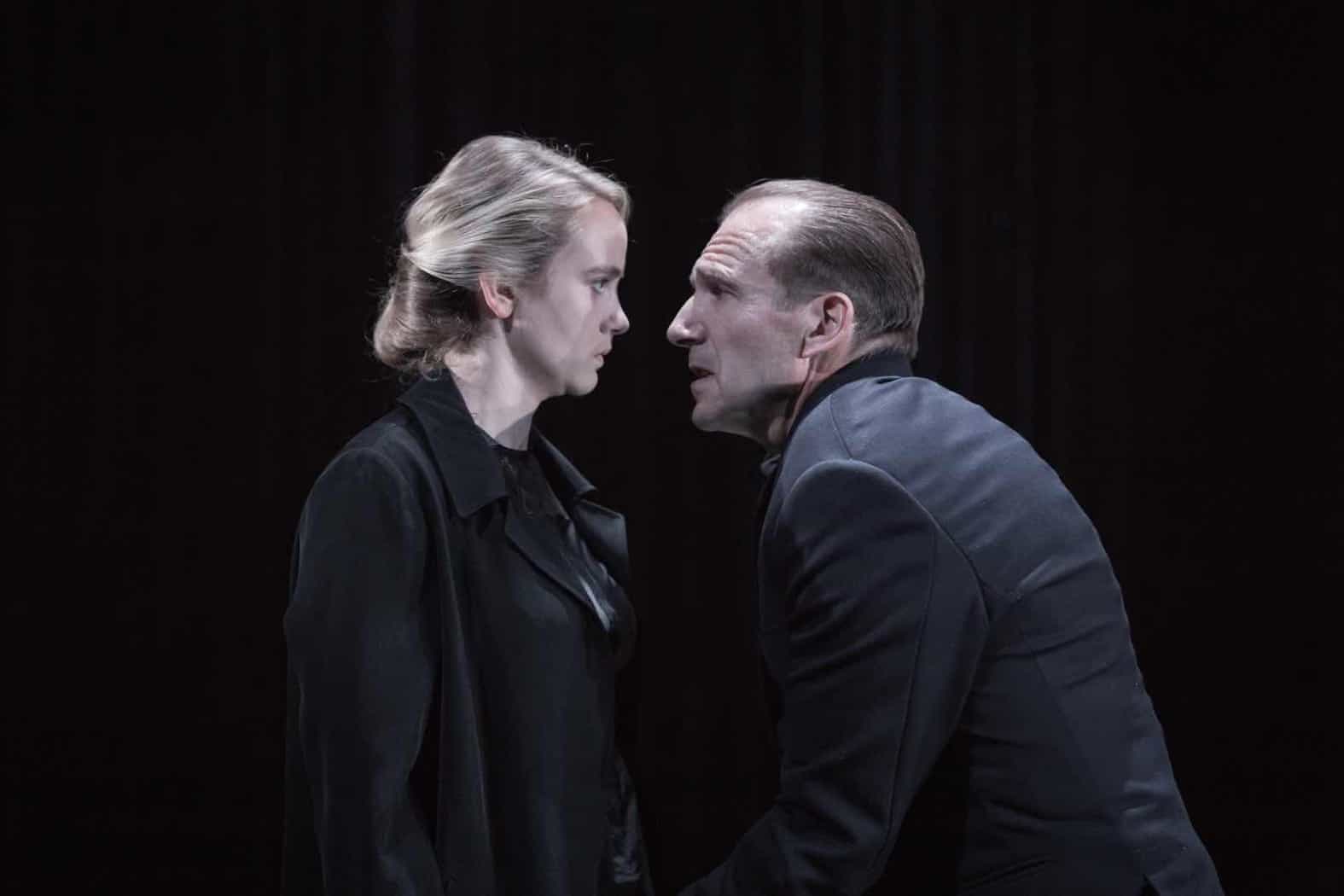Aspiring to follow the hilarious What We Do in the Shadows, David Rühm’s Therapy for a Vampire bills itself as a vampire farce. Unfortunately, it isn’t funny.

The title suggests the film is about a vampire seeking psychoanalysis from Sigmund Freud (Karl Fischer) in 1930s Vienna. But there’s not much therapy in the film. Count von Közsnöm (Tobias Moretti) takes to Freud’s couch only twice. His visits provide little but clumsy exposition. This turns out to be a theme: promising plot twists either fall flat or evaporate.
The Count detests his wife Elsa (Jeannette Hain) who, unable to see her own reflection, obsesses over her appearance. It’s not clear how the pair ever got eternally hitched as the Count is still hung up on his deceased True Love: his maker, the golden-haired Nadila. Freud dutifully takes notes, but he offers little of his trademark batshit-crazy “analysis”.

Meanwhile, irritating artist Viktor (Dominic Oley) insists on painting his brunette girlfriend Luci (Cornelia Ivancan) as a blonde bombshell, hint hint. Their catty relationship is one of the great mysteries of the film: why are they still together? Luci turns out to be the doppelgänger of the Count’s lost love. He must fulfill a set of arbitrary requirements to resurrect Nadila in Luci’s body. He fobs his wife off on Viktor, insisting that this guy can finally paint her face. Zany plot twists ensue before the film’s merciful conclusion.
Therapy for a Vampire conjures an atmosphere of snarky otherworldliness that should buttress the comedy but doesn’t. If you put the film on mute, it looks great. The detail is incredible. The sepia-toned palette mimics faded old photographs. Exaggeratedly on-the-nose, the colour scheme lends the whole film a cheeky aura. Rühm peppers the film with pleasant surprises, such as tiny prop gags, like a pair of Tim Burton-esque “hypnotist goggles”.

The supernatural visual effects are often funnier than the dialogue: a table revolves in midair, its seated guest oblivious to the movement. And the costume design is gorgeous. Countess Elsa, in particular, is resplendent in anachronistic gowns that put modern Goth-wear to shame.
Sadly, the story itself is rather dull. None of the characters are well-developed enough to invoke sympathy. They’re not drawn broadly enough to carry the farcical plot. The film’s two relationships are bafflingly dysfunctional, and the films finishes with a limp climax. Only the cranky but self-possessed Luci, who tears a strip off both her unpleasant suitors, inspires any engagement. But the nonsensical ending undercuts her character. Therapy for a Vampire is misnamed, pretty, and a bit of a snooze. The production design makes it interesting — but only just.

